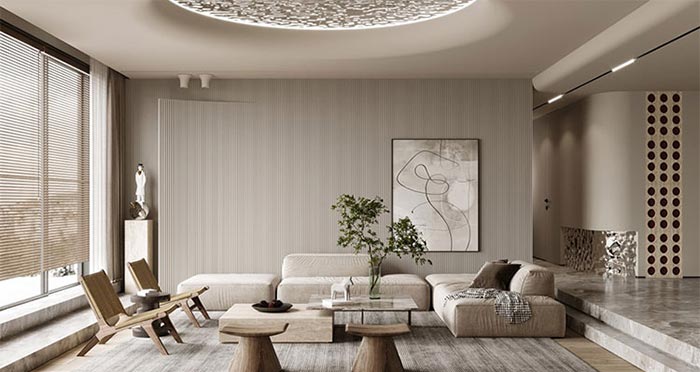Welcome to VANJOIN. Your satisfaction is our biggest pursuit.
The main product of wood customization is textured wall paneling. The overall effect can be greatly enhanced by a beautiful appearance, design, and high-quality wall panel. However, the industry frequently faces a very real problem: the finished product does not meet the customer’s expectations. And is not because the product design is not beautiful enough. But because the installation process is not satisfactory.
In fact, this is a common complaint throughout the interior wall paneling customization industry. “Seven points depend on the product, and three points are installed,” says a popular saying in the wood industry. It is clear that the product is critical, and the installation should not be overlooked.

Traditional installation method
The following are common installation methods used in the decorative interior wall paneling industry. These installation methods also have some unavoidable problems.
Full wood base
Build the wall with wood and then attach the wall panel with air nails or screws. This is the most common installation method. However, formaldehyde and even toxic substances can easily exceed the standard due to the use of treated logs on a large area. This will bring a great safety hazard to the customer’s use. In addition, compared to other installation methods. Although a full wood base is the easiest to level, the flatness is still insufficient.
Suggestions for improvement
We can use WPC interior wall panels to decorate the house without changing the installation method. These interior composite wall panels do not contain harmful chemicals such as formaldehyde and are not harmful to people. They are also customizable textured wall paneling that can meet most people’s design needs.

Wooden hanging board
Hang the wooden hanging piece against the textured wall paneling after installing it directly on the wall. The wall panel can separate from the wall surface using this method. When compared to the previous method, the amount of primer material used is much lower and more environmentally friendly. However, adjusting the wall panel is nearly impossible, and there will still be issues with the wall’s flatness and verticality.
Direct paste
Apply styrofoam or other glue directly to the wall panel. This method saves time and effort. But it is the least environmentally friendly and the most inconvenient for customers.
It can seem that no matter which method, there are drawbacks such as environmental damage, poor flatness, and decay risk. Which will reduce the quality and destroy the beauty of the entire house, resulting in a gap between the site’s installation and the customer’s expectations.

Solve the wall surface
In addition to WPC interior wall panels, we also have a matching WPC wood plastic keel. Before installing the interior textured wall paneling, install the keel to the wall. Then fix the decorative interior wall paneling to the keel. This will solve the wall panel leveling problem.
Also, the WPC keel has the advantage of being waterproof and mold resistant. After using the keel, there is a gap between textured wall paneling and the wall. It allows for better air circulation. It can better solve the risk that painted wall panels are not environmentally friendly and easily decayed.
The unique snap structure of WPC interior wall paneling allows the fixings of the wall paneling to be hidden. It makes the interior decorative wall panels more beautiful and better reflects the quality of the “home”.
Got a question, comment or business enquiry? We are always happy to hear from you.